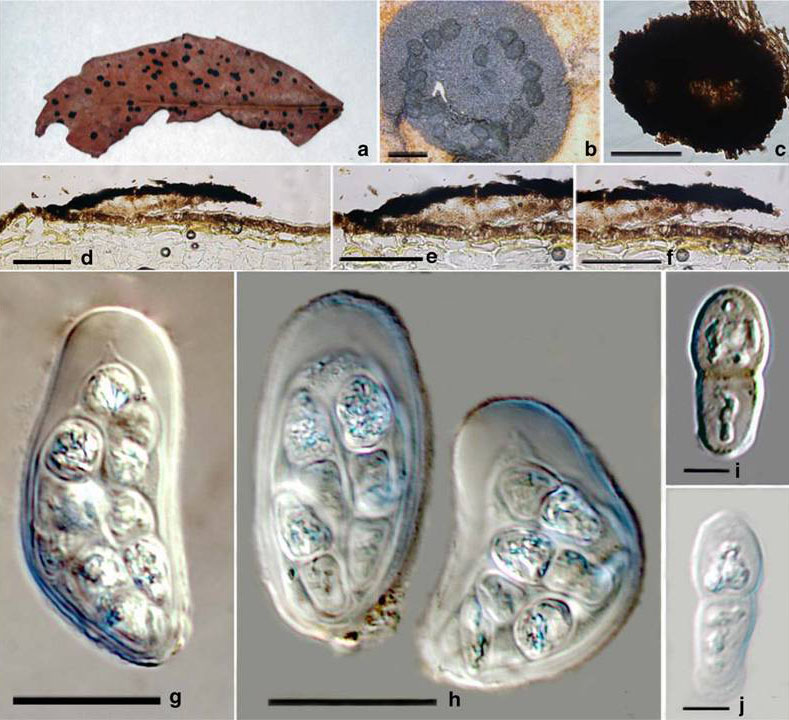Placosoma nothopanacis Syd., Annls mycol. 22(3/6): 303 (1924).
Type: PDD 1003.
Epiphytes on the upper surface, forming subcuticular, circular, blackened areas. Appressoria not observed. Sexual state: Stromata 2 mm superficial, scattered, solitary, circular to elliptical, carbonaceous, flattened. Locules 220–280 diam×70–100 high μm, arranged in a circle within the stromata, conical, opening by linear or stellate fissures. Hamathecium with numerous 1.5–2μm, filiform pseudoparaphyses, with vertically arranged asci. Asci 35–60×20–24μm (x = 35.7×23.5μm, n=20), 8-spored, bitunicate, subglobose to oblong, apedicellate, apically rounded and thickened, with an ocular chamber, not staining blue in IKI. Ascospores 17–20×7–8μm (x = 19.5× 7.5μm, n=20), overlapping 2–4-seriate, broadly ellipsoidal, with an upper cell slightly wider and shorter than the lower, one septate, hyaline becoming brown with age, with a basal mucilaginous pad. Asexual state: hyphomycetous, superficial hyphae bear erect, more or less cylindrical, dark brown, septatesetae and conidiophores, 90×4–5μm. Conidia 25–43×5.6– 7.3μm, blastic, solitary, brown to dark brown, narrowly obclavate, 2–3-septate, slightly constricted, narrowed towards the darker basal scar, mildly striate (details of asexual state from Sivanesan 1984).
Material examined: NEW ZEALAND, Wellington, Mt. Hector, on Neopanax colensoi (Hook.f.) Allan (Araliaceae), 27 December 1919, E.H. Atkinson (PDD 1003, holotype).
Fig. 1 Placosoma nothopanacis (holotype). a Herbarium specimen b Appearance of stromata on the leaf surface. c Squash mount of stroma in lactic acid. d, e Asci. f Pseudoparaphyses. g, h Ascospores. Note the lower mucilaginous pad. Scale bars: b=1 mm, c=100μm, d, e=20μm, f–h=10μm

